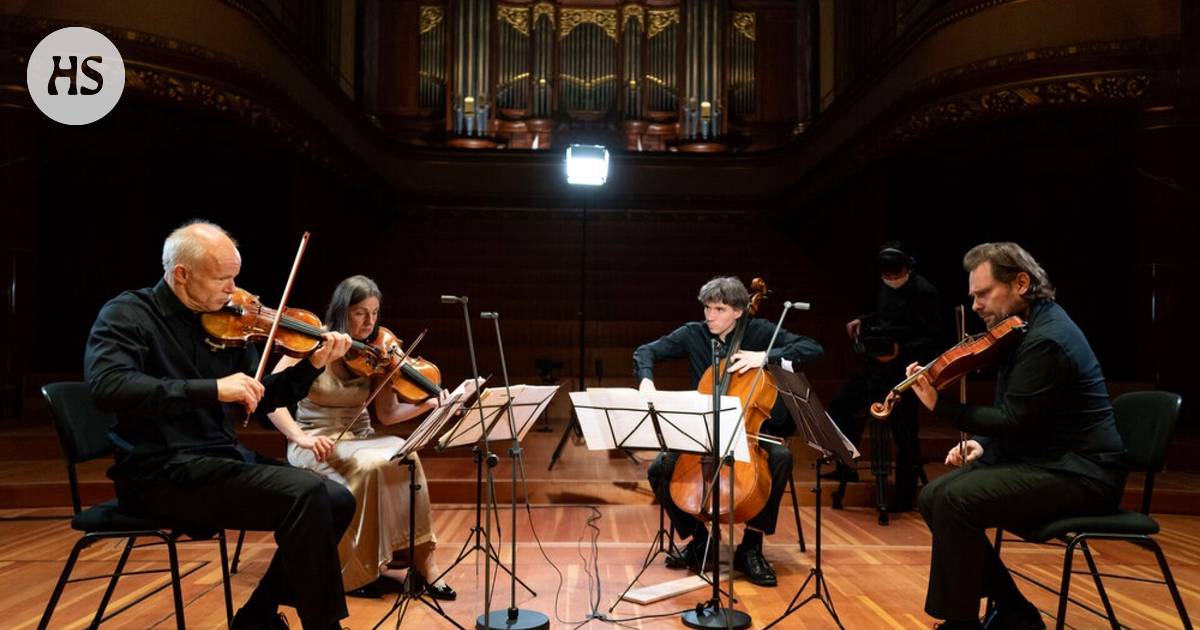The playing of the members of the Zehetmair Quartet was an equal conversation between the four musicians, chamber music at its best.
Classic
Zehetmair Quartet in the Knights’ Hall 6.5. Thomas Zehetmair, violin, Jakub Jakowicz, violin, Ruth Killius, viola, Christian Elliot, cello. – Brahms, Webern, Sibelius.
Top level visits by chamber music bands have been a rare occurrence in the metropolitan area in recent decades. Austrian Thomas Zehetmairin the concert of the quartet, named after him, founded in 1994, was one celebration for lovers of chamber music.
The instruments of the members of the quartet fit together remarkably well, and over the years they have merged into a single superplayer, which also includes the personalities of each player.
Zehetmair himself has a Stradivari, whose rich and noble sound has caught on to the quartet’s other instruments – and vice versa.
Close contact and interaction has grown between the members of the quartet. They can read each other down to the micro-faces. The playing is an equal conversation between the four players, chamber music at its best.
Concert started Brahmsin on the first, a quartet in C minor on. 5 no 1. The themes of the four parts of the quartet are related to each other. The result was an organic melody process that was in a constant dynamic movement of development and modification.
The fast-paced excitement, sense of harmony, and lyrical sensitivity of expression combined with the harsh structural power of form. The flowing triols and serenade-like pizzicatoes of the slow Romanze section, as well as Scherzo’s folk themes, alleviated the emotionally charged, powerfully flying flutter of the extremes.
The dense romantic flora turned into quiet sounds and vibrations Anton Webernin in a free-toned, modern In six bagatelles op. 9.
The bagatelles faded by quickly. The Zehetmair Quartet gave birth to small, intriguingly enigmatic images, psychograms beneath which strong expressionist tensions, with their flickering remarks, dotted chords, and bouncing pizzicatoes. Silence spoke.
Last numbered by the Zehetmair Quartet Sibelius Intimate voices quartet.
Intimate voices (1908–1909) was born during the dark period of Sibelius. The painful throat disease caused an existential crisis and fear of death, which are reflected in the quartet’s mental landscape.
The quartet listened with a sensitive ear to the anxious voices inside Sibelius, which often disappear into a void somewhere. There was a singing affection in the sound of the slow part, if there was an emotional storm.
The quartet also found down-to-earth power and ecstasy in the music.
The final went so wild that Sibelius came to mind Lemminkäinen’s military expeditions. The Zehetmair Quartet made the Sibelius Quartet a mysterious emotional journey that kept its listeners in tension.
